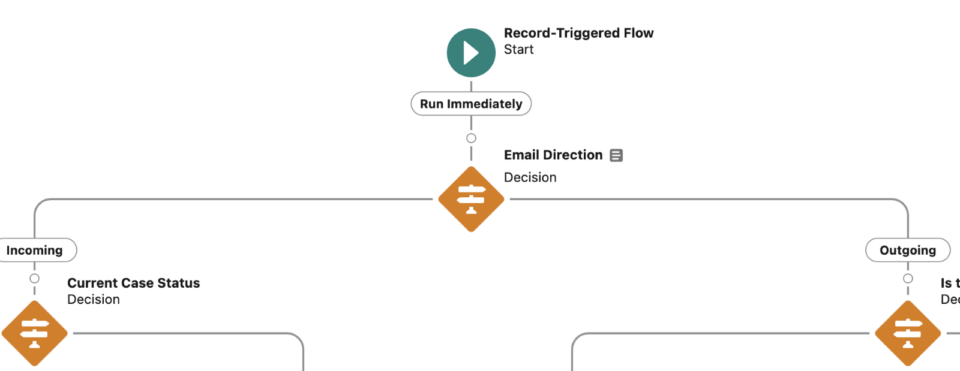Email-to-Case for Salesforce and Five Important Factors to Consider for Success 🚀
Hey Salesforce community! 👋
There are a multitude of important aspects to consider when diving into Email-to-Case and ensuring your team has success from the get-go – here are just 5 items that will help you hit the ground running 🏃🏃🏾♀️
- Give Service Console a Spin 🎡
Why? The end user will experience improved visibility, user-friendliness & speed when navigating Salesforce using the Console, rather than the Standard Navigation view, because now they can have multiple tabs open handing multiple cases without opening multiple browsers.


- Are You Using SLAs ⏲️ (Note: Service Cloud Licenses Required).
What is an SLA? Service Level Agreement outlines the expected level of service, including specific commitments on how quickly issues will be addressed, resolved, or tasks completed. To ensure accurate SLAs, consider using Entitlements and Milestones within Salesforce.
How is this helpful? You’re creating a company standard that your customers can expect from you and your team. In addition, there are built in reminders for agents and managers helping to keep them on track when busy or distracted with email notifications and/ or tasks instead of hoping people reminder everything, let’s face it were all human and any extra assistance we can get is appreciated.
While there are various areas to review, here’s a brief summary to help your team meet their goals on each case with these Salesforce features:
There are of course many SLAs you can add to Milestones, but most teams can utilize two Milestones: First Response and Resolution Timer.
– First Response: This SLA provides a time frame for the representative to respond to customers. It helps ensure timely initial responses and allows you to set up warnings and violations to prevent the allotted time from exceeding the limit.
– Resolution Timer: This SLA specifies the desired timeframe for the representative to complete or close the case. It ensures that cases are resolved efficiently and effectively.
Implementing Milestones streamlines your service process, enhances customer satisfaction, and ensures compliance with Service Level Agreements (SLAs).

- Let’s Get Your Automations Set Up 🤖
Have you ever emailed a customer service department and wonder what and if they received it? Not a worry when you have Salesforce!

Some Examples of Benefit to Email to Case Automations:
- Email Automated goes into Salesforce creating a Case – Time savings of manually entering or an agent forgetting to add completely.
- Email Notification of Acknowledgement back to Customer when Case is created – Let customers know that the case has been received and give them a Case # to reference if they need to call in.
- Email updates based of “Status” changes – Benefits to keep the customer updated and reducing phone or email inquiries about their case.

Case Updates of whether the Email Sequences are Incoming or Outgoing – Ensure timely email interactions, consider adding automation(s) to the Email Message object. This will help you track whether emails are Incoming or Outgoing. Additionally, you can use this automation to update your case based on the content of the email. For instance, if a customer responds to an already closed case, the case can be reopened.
Furthermore, it’s important to set up automations against the Case object, such as Entitlements and Milestones. For example, when a representative responds to a customer’s initial email, the First Response milestone can be automatically changed to complete.
It’s crucial to discuss your process and needs before you implement your Salesforce automations and important of training the team on how these features will be used and benefit them.
- Email Threads, Make Sure Your Team Is Trained 💬
What is an Email Thread? This is a unique identification text that Salesforce tags the email with all back & forth conversations stay within the same Case and will avoid creating a duplicate case.
The Email-to-Case Email Thread in Salesforce is essential, this process helps maintain a single, continuous thread of communication, keeping all interactions and updates within the original case. Ensuring that this identifier remains intact in all email exchanges is crucial for accurate tracking and prevents confusion or duplicate case creation, enhancing efficiency and customer satisfaction.
Why is training important? At times agents can go back to Outlook or Gmail and start a new conversation in doing this the email thread is broken and will create a new case in the system when the customer emails back.

Case Thread will allow for all ongoing conversations to log back to the existing case keeping everything in one area. You can respond via Salesforce (making it easier for reps to not have to flip back and forth) or your email (Outlook or Gmail).

- Make Sure Your Reports & Dashboards Are Ready to Go 📁
Another crucial aspect to keep in mind is creating reports and dashboards for your service team(s). This task may seem like a to-do, but it’s essential. By having real time reporting on Cases, you can gain valuable insights into how you’re performing and gaining insights on;
- How you can serve your customers better.
- Are there product or process issues that need to be addressed?
- Do you have a supplier issue?
- Can you achieve your SLA targets?
- What are the typical case reasons, fast-track onboarding/ training new agents.
- Vital Information to buildout training material (knowledge base) for internal and external use.

Dashboard Snapshot

As a 20-year plus Trusted Salesforce Partner, we would be happy to discuss your current situation if you have any questions.
